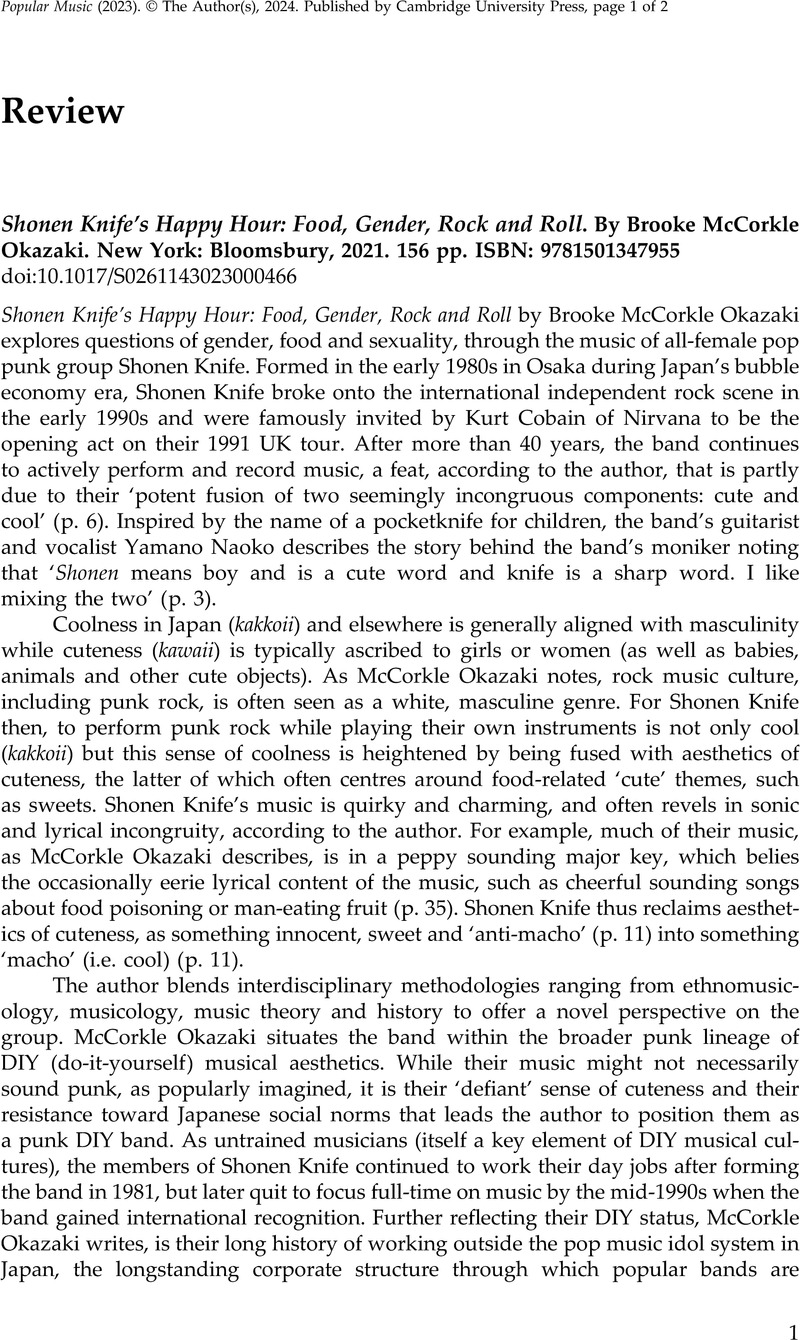No CrossRef data available.
Article contents
Shonen Knife's Happy Hour: Food, Gender, Rock and Roll. By Brooke McCorkle Okazaki. New York: Bloomsbury, 2021. 156 pp. ISBN: 9781501347955
Review products
Shonen Knife's Happy Hour: Food, Gender, Rock and Roll. By Brooke McCorkle Okazaki. New York: Bloomsbury, 2021. 156 pp. ISBN: 9781501347955
Published online by Cambridge University Press: 01 February 2024
Abstract
An abstract is not available for this content so a preview has been provided. Please use the Get access link above for information on how to access this content.

Information
- Type
- Review
- Information
- Copyright
- Copyright © The Author(s), 2024. Published by Cambridge University Press


